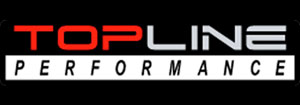How To Tackle Water Crossing In A Four-Wheel Drive
If you are a person who owns a four-wheel drive, then you might be already aware of the fact that cold water and hot engines is a recipe for disasters. This is one of the most important things, which 4×4 enthusiasts should note before forcing their vehicle for a river crossing.
Rapid temperature changes are not a good thing for your 4×4 and it can lead to steaming up of the brakes, cracks in the radiator, and even the hub seals and cooling fan may get damaged. Therefore, when you reach a river or water crossing while you are traveling on your four-wheel drive, then the first and most important thing you should do is to stop the vehicle and give the engine some time to cool down.
Let us assume that you have stopped your four-wheel drive and gave it a few minutes to rest. Now, you should walk across the crossing, as it will enable you to identify whether there are any obstacles in the preferred path. In addition to that, you should also check the bottom surface and depth of the water crossing before you take your vehicle to it.
Continue to check the river crossing until you see a safe passage for your four-wheel drive, including the entry and exit points. You should also ensure that the preferred passage is free from obstacles as mentioned above. When done, all you need to do is to stay on the line and try not to deviate from the path, whatever happens.
Even if you are an experienced four-wheel driver, it is best to use low-range gearing to tackle river crossing. This is because low range gearing offers maximum torque and enables you to move the 4×4 drive through the water easily. In addition to that, this will also give more control over the speed and revs, which in turn reduces the chances of getting stuck in the water.
If the engine of your vehicle stalls, try to instantly start up the vehicle and continue moving through the safe passage. Make sure to control your aim and speed to avoid huge splashes of water and rushing waves that may block your view while you are trying to tackle the water passage in your 4×4.

